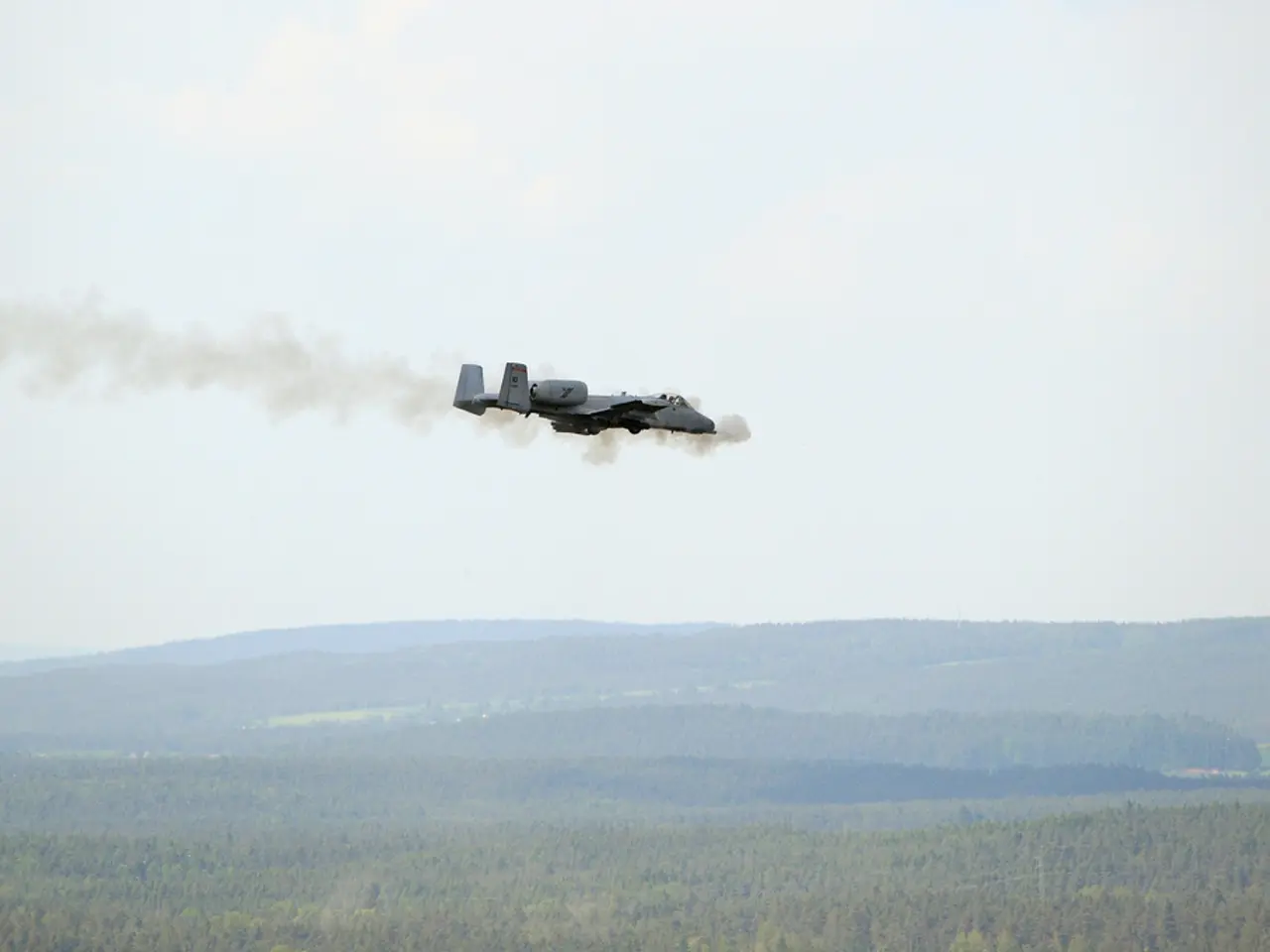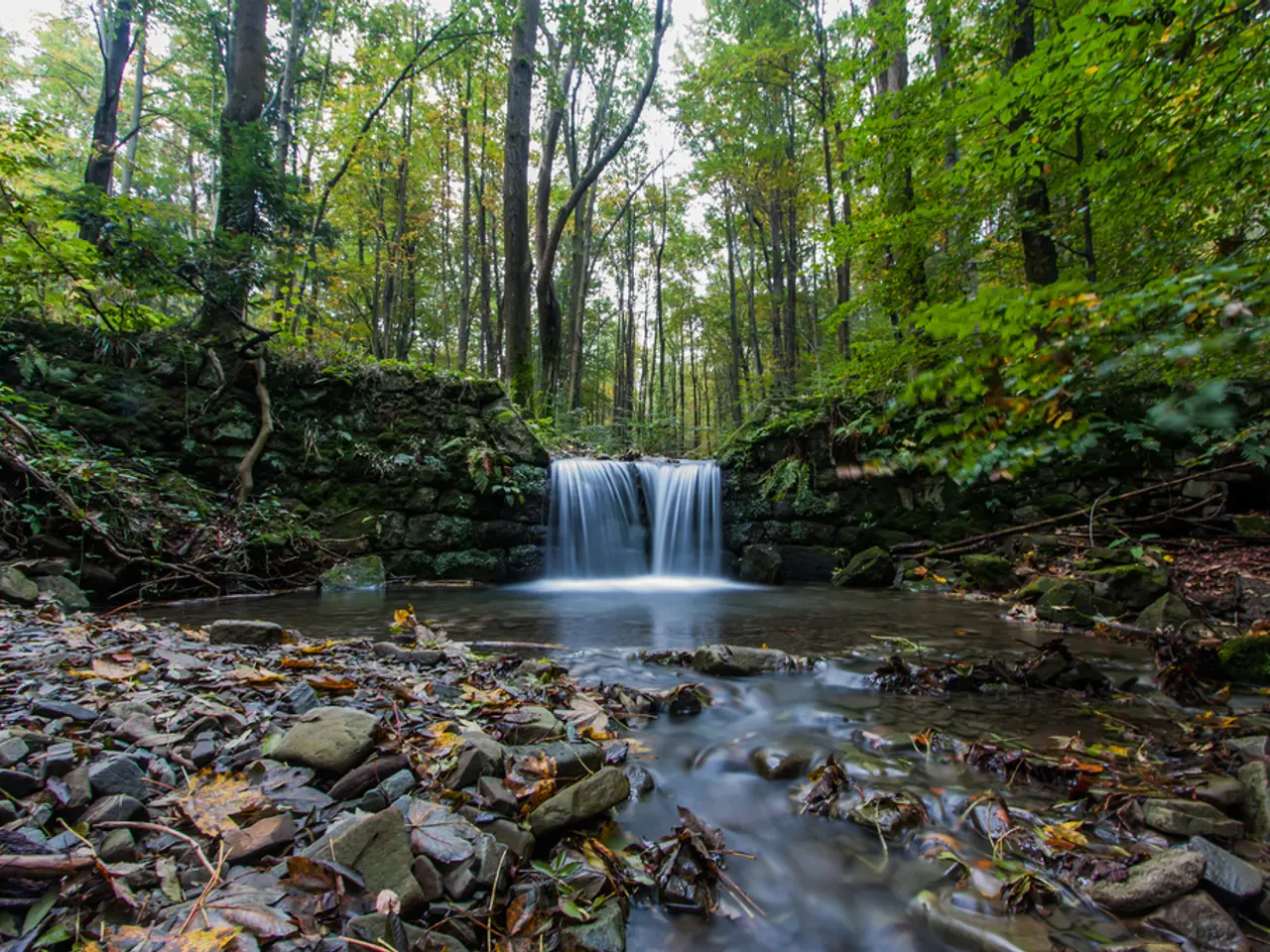Volcano Eruption Causes Fear and Trembling Among Residents
Mount Spurr, a volcano located in Alaska, has been showing signs of volcanic unrest since the beginning of the year [1]. The Alaska Volcano Observatory (AVO) has maintained an advisory level for the volcano, with an aviation color code of yellow, indicating ongoing seismic and gas emission activity, but no significant escalation towards an eruption has been confirmed yet [4].
Recent observations include elevated volcanic gas emissions and reactivated fumaroles at Crater Peak vent, a secondary vent about 2 miles south of the summit [1][2]. Persistent but low-level seismic activity, including small volcanic earthquakes beneath the volcano’s edifice, has also been noted [1][4]. Occasional steam plumes and minor ground deformation have been detected, but no surface heating or explosive activity has been observed so far [1][4].
In March, scientists raised concerns about a probable eruption in the weeks or months ahead based on these signs, estimating about a 50% chance of eruption by late June [1][2][3]. However, by June and early July, the unrest has not escalated as predicted, leading experts to describe the current period as a "snooze button" phase, where the volcano remains restless but stable enough not to indicate imminent eruption [1].
Experts emphasize that while the probability of an eruption without additional warning is currently low, an eruption remains possible in the near future [2][3][4]. They expect that before any eruption, there would be clear increases in seismic activity, gas emissions, surface deformation, and heating, which would provide days to weeks of warning [2][3][4].
If an eruption were to occur, it would most likely occur at the flank vent of Crater Peak and would be explosive [4]. The resulting ash cloud could blanket the city of Anchorage and nearby communities in a thick layer of dust [4]. Potential risks of eruption include ash clouds disruptive to air traffic near Anchorage and Cook Inlet, localized impacts from ashfall, pyroclastic flows, or lahars, depending on eruption size and weather conditions, and hazards typical of stratovolcano eruptions in a populated region within 80 miles of Alaska’s largest city [3].
Despite the decrease in surface activity, continued magma movement deep down suggests that the potential for eruption remains [4]. The collapse of snow and ice into the summit crater lake continues, and volcanic gas measurements have not been possible since March due to persistent bad weather preventing surveillance flights [4]. The rate of shallow earthquakes under Mount Spurr is currently unknown, but the AVO reported 60 to 80 earthquakes per week under Mount Spurr in the last month, a lower rate compared to January and February [4]. Steam emissions from fumaroles around the summit crater persist, and ground deformation, an indicator of magma movements, has slowed in the last three weeks [4].
The AVO continues to monitor Mount Spurr closely, with the aim of providing timely warnings if conditions change [1][2][3][4]. However, as of early July 2025, no current information is available about the status of any evacuation orders or alerts for the 300,000 Americans on alert due to Mount Spurr's volcanic activity [4]. Elevated carbon and sulfur dioxide values have been found near gas vents, particularly in the craters on Crater Peak and the Spurr summit [4].
References: [1] Alaska Volcano Observatory. (2025). Mount Spurr Volcano Update. Retrieved from https://www.avo.alaska.edu/activity/Spurr.php [2] KUCB. (2025). Mount Spurr volcano remains in 'snooze button' phase, experts say. Retrieved from https://www.kucb.org/post/mount-spurr-volcano-remains-snooze-button-phase-experts-say [3] Anchorage Daily News. (2025). Mount Spurr volcano: What you need to know. Retrieved from https://www.adn.com/alaska-news/2025/03/24/mount-spurr-volcano-what-you-need-to-know/ [4] U.S. Geological Survey. (2025). Volcano Hazards Program. Retrieved from https://www.usgs.gov/volcanoes/mount-spurr-volcano-alaska-united-states
- The signs of volcanic activity at Mount Spurr, including gas emissions, seismic activity, and ground deformation, have raised concerns about a possible eruption in the science field, particularly within health-and-wellness and environmental-science, due to potential risks such as ash clouds disruptive to air traffic and localized impacts from ashfall.
- In the realm of environmental-science and space-and-astronomy, scientists are closely monitoring Mount Spurr to forecast any developments, with an expectation that clear increases in seismic activity, gas emissions, surface deformation, and heating would provide advanced warning of an eruption, allowing for adequate preparation and response.
- Medically, their attention is also focused on the potential health effects on the 300,000 Americans living near the volcano, particularly elevated carbon and sulfur dioxide levels found near gas vents, which could pose threats to respiratory health and overall wellbeing.




